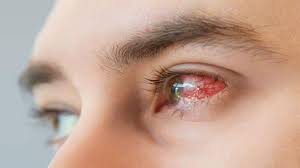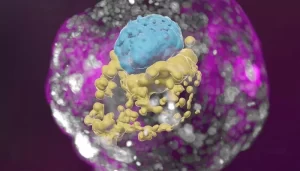Understanding Adenovirus: Symptoms, Transmission, and Prevention

Adenovirus Symptoms, Transmission, and Prevention
Introduction
In the world of viruses, adenovirus is a familiar name. This common viral infection can affect individuals of all ages, causing a range of symptoms from mild cold-like symptoms to severe respiratory issues. In this blog post, we will delve into the world of adenovirus, discussing its symptoms, transmission, and how you can protect yourself and your loved ones.
What is Adenovirus?
Adenoviruses are a group of viruses responsible for causing a variety of illnesses. These viruses are highly contagious and can affect different parts of the body, including the respiratory tract, eyes, and gastrointestinal system. There are over 50 known types of adenoviruses, and each can cause a slightly different set of symptoms.
Symptoms of Adenovirus Infection
Adenovirus infections can present with a wide range of symptoms, depending on the type of virus and the affected organ system. Here are some common symptoms associated with adenovirus infections:
Respiratory Symptoms: Adenoviruses are often responsible for respiratory infections, which can manifest as symptoms similar to the common cold or flu. These symptoms may include coughing, sneezing, runny or stuffy nose, sore throat, fever, and fatigue.
Conjunctivitis (Pink Eye): Adenovirus can also cause pink eye, leading to redness, itching, and discharge from the eyes. Conjunctivitis caused by adenovirus is highly contagious and can spread through direct contact.
Gastrointestinal Symptoms: Some adenovirus types can lead to stomach and intestinal infections, resulting in symptoms like diarrhea, vomiting, abdominal pain, and fever.
Urinary Tract Infections: In rare cases, adenovirus can cause urinary tract infections, leading to symptoms such as painful urination and lower abdominal discomfort.
Severe Respiratory Illness: In immunocompromised individuals or those with underlying health conditions, adenovirus infections can progress to severe respiratory illnesses, such as pneumonia, which may require hospitalization.
How is Adenovirus Transmitted?
Adenovirus spreads from person to person through various means, making it highly contagious. The main methods of transmission involve:
Close Contact: Direct contact with an infected person, such as shaking hands, hugging, or kissing, can transmit the virus.
Respiratory Droplets: Adenovirus can spread through respiratory droplets when an infected person coughs, sneezes, or talks. This is a common mode of transmission in crowded places.
Touching Contaminated Surfaces: Touching surfaces or objects contaminated with the virus and then touching the face, especially the eyes, nose, or mouth, can lead to infection.
Waterborne Transmission: Adenoviruses can survive in water, leading to outbreaks associated with swimming pools and water parks.
Preventing Adenovirus Infection
Preventing adenovirus infection involves practicing good hygiene and taking certain precautions. Here are some steps you can take to reduce your risk:
Frequent Handwashing: Wash your hands regularly with soap and water for at least 20 seconds, especially after being in public places, touching surfaces, or caring for someone who is sick.
Avoid Close Contact: Maintain physical distance from individuals who are sick, and avoid close contact such as hugging or kissing.
Use Hand Sanitizer: When soap and water are not available, use a hand sanitizer with at least 60% alcohol to disinfect your hands.
Avoid Touching Your Face: Refrain from touching your eyes, nose, and mouth with unwashed hands.
Practice Respiratory Hygiene: Cover your mouth and nose with a tissue or your elbow when you cough or sneeze, and dispose of used tissues immediately.
Disinfect Frequently Touched Surfaces: Regularly clean and disinfect frequently touched surfaces in your home, workplace, and public spaces.
Vaccination: In some cases, adenovirus vaccines may be recommended, especially for military recruits and individuals at higher risk of adenovirus-associated illnesses.
Conclusion
Adenovirus infections are common and can lead to a range of symptoms, from mild respiratory issues to more severe illnesses. Practicing good hygiene, maintaining social distance, and following public health guidelines can help prevent the spread of adenovirus. If you or someone you know develops symptoms suggestive of an adenovirus infection, seek medical advice promptly to receive appropriate care and prevent further transmission.
For More Related Articles Browse Our Website Blogster.pk
For social Connection You can also Visit and follow our Social media Platforms
Facebook , Instagram, Linkedin, Pinterest, Quora, Twitter, Youtube.








